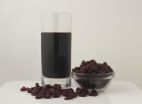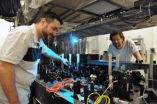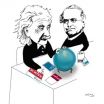(Press-News.org) Rochester, MN, June 2, 2014 – When prescription medicines are stolen or used illegally, it is called drug diversion. One aspect of drug diversion that is not well recognized involves health care providers who steal controlled substances for their personal use. A report authored by experts from the Centers for Disease Control and Prevention (CDC) --published today in Mayo Clinic Proceedings -- outlines outbreaks of infections that have occurred as a result of health care providers stealing or tampering with their patients' medications. These outbreaks revealed gaps in prevention, detection, and response to drug diversion.
"Patient harm stemming from diverting injectable drugs can include patients not obtaining adequate pain management, exposure to substandard care from an impaired provider, and exposure to life-threatening infections," according to study co-authors Melissa K. Schaefer, MD, and Joseph F. Perz, DrPH, of the Division of Healthcare Quality Promotion, National Center for Emerging and Zoonotic Infectious Diseases, CDC, Atlanta, GA.
Over the past 10 years, outbreak investigations related to health care provider drug diversion have documented more than 100 infections and nearly 30,000 patients potentially exposed to bloodborne or bacterial pathogens. The frequency with which these events have been detected appears to be increasing.
The review identified six outbreaks within hospital settings located in eight states over a 10-year period beginning in 2004. Implicated health care professionals included three technicians and three nurses. In four of these outbreaks the implicated health care professional was infected with hepatitis C virus and served as the source of disease transmission to patients. Two other outbreaks resulted from improper drug handling by drug-diverting health care professionals infecting patients with bloodstream bacterial infections.
"The outbreaks we have identified illustrate some of the devastating and wide-reaching impacts of drug diversion in US health care settings," note Dr. Schaefer and Dr. Perz. "Health care facilities should ensure that patients safely receive medications as prescribed. This effort includes having systems in place to prevent drug diversion as well as developing protocols for early detection and appropriate response if, despite safeguards, diversion does occur."
To prevent diversion, health care facilities should enforce strong narcotics security measures and maintain active monitoring systems. Appropriate response when diversion is suspected or identified includes prompt reporting to enforcement agencies and assessment of harm to patients, including assessment of possible infection risks.
"This report serves notice that all health care facilities that house controlled substances or other drugs of abuse must have effective systems in place that deter drug diversion," comment Keith H. Berge, MD, and William L. Lanier, MD, Department of Anesthesiology, Mayo Clinic, Rochester, MN, in an accompanying editorial. "Further, those facilities must be able to quickly and effectively investigate when a drug diversion is suspected in an effort to limit the number of patients potentially exposed to harm. The increasing incidence of drug diversion makes it mandatory that drug control be improved."
INFORMATION:
CDC provides several important resources for health care providers devoted to drug diversion:
CDC Injection Safety/Drug Diversion: http://www.cdc.gov/injectionsafety/drugdiversion
CDC's Safe Healthcare Blog feature on drug diversion: http://blogs.cdc.gov/safehealthcare/category/safe-injection
CDC's Safe Injection Campaign: http://www.oneandonlycampaign.org
Medscape's CDC Expert Commentary on drug diversion: http://www.medscape.com/viewarticle/825801
CDC report: Patients harmed after health-care providers steal patients' drugs
Impact of drug diversion documented in Mayo Clinic Proceedings
2014-06-02
ELSE PRESS RELEASES FROM THIS DATE:
Rensselaer researchers predict the electrical response of metals to extreme pressures
2014-06-02
Troy, N.Y. – Research published today in the Proceedings of the National Academy of Sciences makes it possible to predict how subjecting metals to severe pressure can lower their electrical resistance, a finding that could have applications in computer chips and other materials that could benefit from specific electrical resistance.
The semiconductor industry has long manipulated materials like silicon through the use of pressure, a strategy known as "strain engineering," to improve the performance of transistors. But as the speed of transistors has increased, the limited ...
Study shows impact of tart cherries on inflammation and oxidative stress after cycling
2014-06-02
Cyclists who drank Montmorency tart cherry juice concentrate before a three-day simulated race experienced less inflammation and oxidative stress compared to those who drank another beverage, according to a recent U.K. study published in the journal Nutrients.
A research team led by Dr. Glyn Howatson with PhD student Phillip Bell at Northumbria University gave 16 well-trained, male cyclists about 1 ounce (30 ml) of Montmorency tart cherry juice concentrate mixed with water (equivalent to 90 whole Montmorency tart cherries per serving), or a calorie-matched placebo, twice ...
Transition to ICD-10 may mean financial, data loss for pediatricians
2014-06-02
Pediatricians may lose money or data during the mandated conversion from the current International Classification of Diseases (ICD) to its new version, according to University of Illinois at Chicago researchers.
The study is published in Pediatrics.
The ICD codes are used in managing all aspects of health care, from insurance reimbursement to staffing decisions to supply procurement to research. Pediatricians use a variety of ICD-9 codes from many different categories, including well child care, infectious diseases, injury and genetic disorders.
The ICD-10-CM, scheduled ...
Here come the 'brobots'
2014-06-02
WASHINGTON D.C. June 2, 2014 -- A team of researchers at the University of Twente (Netherlands) and German University in Cairo (Egypt) has developed sperm-inspired microrobots, which can be controlled by oscillating weak magnetic fields.
Described in a cover article in the journal Applied Physics Letters, which is from AIP Publishing, the 322 micron-long robots consist solely of a head coated in a thick cobalt-nickel layer and an uncoated tail. When the robot is subjected to an oscillating field of less than five millitesla – about the strength of a decorative refrigerator ...
MRI-guided laser procedure provides alternative to epilepsy surgery
2014-06-02
May 30, 2014 – For patients with mesial temporal lobe epilepsy (MTLE) that can't be controlled by medications, a minimally invasive laser procedure performed under MRI guidance provides a safe and effective alternative to surgery, suggests a study in the June issue of Neurosurgery , official journal of the Congress of Neurological Surgeons . The journal is published by Lippincott Williams & Wilkins , a part of Wolters Kluwer Health.
"Real-time magnetic resonance-guided stereotactic laser amygdalohippocampotomy (SLAH) is a technically novel, safe and effective alternative ...
University of Toronto physicists take quantum leap toward ultra-precise measurement
2014-06-02
TORONTO, ON – For the first time, physicists at the University of Toronto (U of T) have overcome a major challenge in the science of measurement using quantum mechanics. Their work paves the way for great advances in using quantum states to enable the next generation of ultra-precise measurement technologies.
"We've been able to conduct measurements using photons – individual particles of light – at a resolution unattainable according to classical physics," says Lee Rozema, a Ph.D. candidate in Professor Aephraim Steinberg's quantum optics research group in U of T's Department ...
One in 4 children with leukemia not taking maintenance medication, study shows
2014-06-02
(WASHINGTON, June 2, 2014) – An estimated 25 percent of children in remission from acute lymphocytic leukemia (ALL) are missing too many doses of an essential maintenance medication that minimizes their risk of relapse, according to a study published online today in Blood, the Journal of the American Society of Hematology. The study also reports that maintenance medication adherence was lower in African American and Asian children in remission from ALL than in non-Hispanic white children, with 46 percent of African Americans and 28 percent of Asians not taking enough to ...
No apparent link between chronic cerebrospinal venous insufficiency and MS
2014-06-02
There appears to be no link between chronic cerebrospinal venous insufficiency and multiple sclerosis (MS), according to new research published in CMAJ (Canadian Medical Association Journal).
In 2009, Dr. Paolo Zamboni postulated that chronic cerebrospinal venous insufficiency is a cause of MS, an inflammatory disease of the central nervous system that affects people in northern climates in particular. Published evidence has not been able to find a link to MS, and no one has been able replicate his findings. Several recent studies have shown an association between ultrasound-diagnosed ...
Fishing boats are powerful seabird magnets
2014-06-02
It's no surprise that seabirds are attracted to fishing boats, and especially to the abundance of discards that find their way back into the ocean. But researchers reporting in the Cell Press journal Current Biology on June 2 now find that those boats influence bird behavior over much longer distances than scientists had expected.
Specifically, each boat creates a "halo of influence" across an area measuring about 22 kilometers. That's 13.6 miles—a distance a little longer than a half marathon.
"While we knew that seabirds, including gannets, regularly followed fishing ...
Success for scientists in the academic job market is highly predictable
2014-06-02
The number of scientists in training vastly exceeds the number that will successfully land a faculty position at an academic institution. Now, researchers report in the Cell Press journal Current Biology on June 2 that an individual scientist's chances are very predictable based solely on his or her publication record.
The likelihood of getting that faculty job depends mostly on the number of publications, the impact factor of the journals in which those papers are published, and the number of papers that receive more citations than would be expected based on the journal ...
LAST 30 PRESS RELEASES:
Longest observation of an active solar region
Why nail-biting, procrastination and other self-sabotaging behaviors are rooted in survival instincts
Regional variations in mechanical properties of porcine leptomeninges
Artificial empathy in therapy and healthcare: advancements in interpersonal interaction technologies
Why some brains switch gears more efficiently than others
UVA’s Jundong Li wins ICDM’S 2025 Tao Li Award for data mining, machine learning
UVA’s low-power, high-performance computer power player Mircea Stan earns National Academy of Inventors fellowship
Not playing by the rules: USU researcher explores filamentous algae dynamics in rivers
Do our body clocks influence our risk of dementia?
Anthropologists offer new evidence of bipedalism in long-debated fossil discovery
Safer receipt paper from wood
Dosage-sensitive genes suggest no whole-genome duplications in ancestral angiosperm
First ancient human herpesvirus genomes document their deep history with humans
Why Some Bacteria Survive Antibiotics and How to Stop Them - New study reveals that bacteria can survive antibiotic treatment through two fundamentally different “shutdown modes”
UCLA study links scar healing to dangerous placenta condition
CHANGE-seq-BE finds off-target changes in the genome from base editors
The Journal of Nuclear Medicine Ahead-of-Print Tip Sheet: January 2, 2026
Delayed or absent first dose of measles, mumps, and rubella vaccination
Trends in US preterm birth rates by household income and race and ethnicity
Study identifies potential biomarker linked to progression and brain inflammation in multiple sclerosis
Many mothers in Norway do not show up for postnatal check-ups
Researchers want to find out why quick clay is so unstable
Superradiant spins show teamwork at the quantum scale
Cleveland Clinic Research links tumor bacteria to immunotherapy resistance in head and neck cancer
First Editorial of 2026: Resisting AI slop
Joint ground- and space-based observations reveal Saturn-mass rogue planet
Inheritable genetic variant offers protection against blood cancer risk and progression
Pigs settled Pacific islands alongside early human voyagers
A Coral reef’s daily pulse reshapes microbes in surrounding waters
EAST Tokamak experiments exceed plasma density limit, offering new approach to fusion ignition
[Press-News.org] CDC report: Patients harmed after health-care providers steal patients' drugsImpact of drug diversion documented in Mayo Clinic Proceedings




